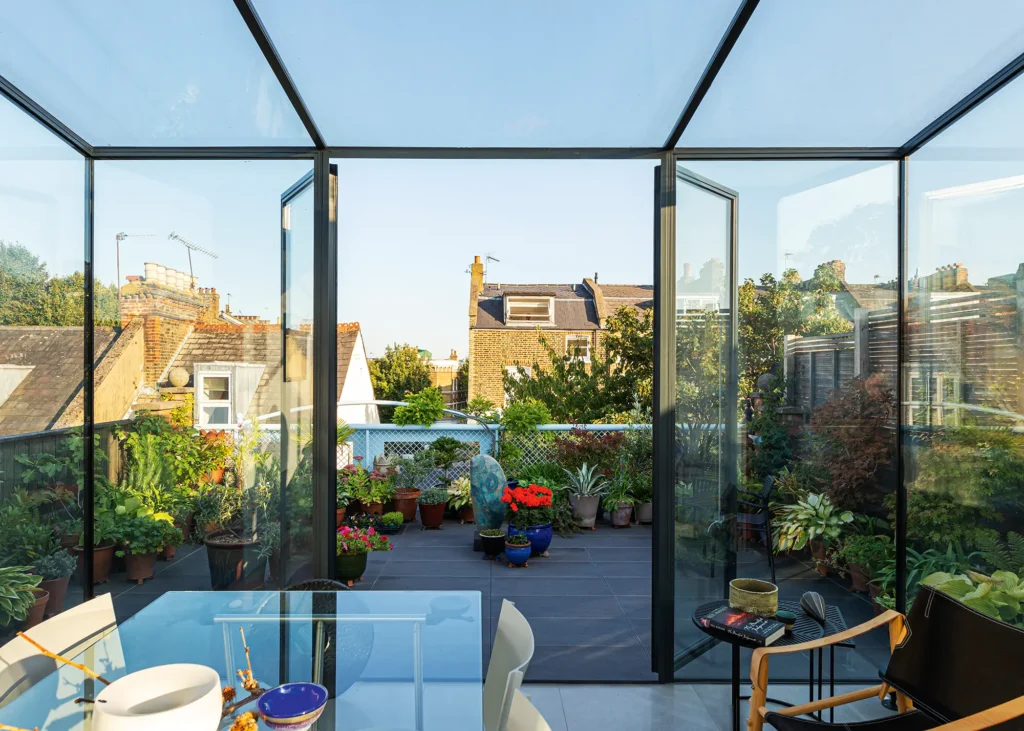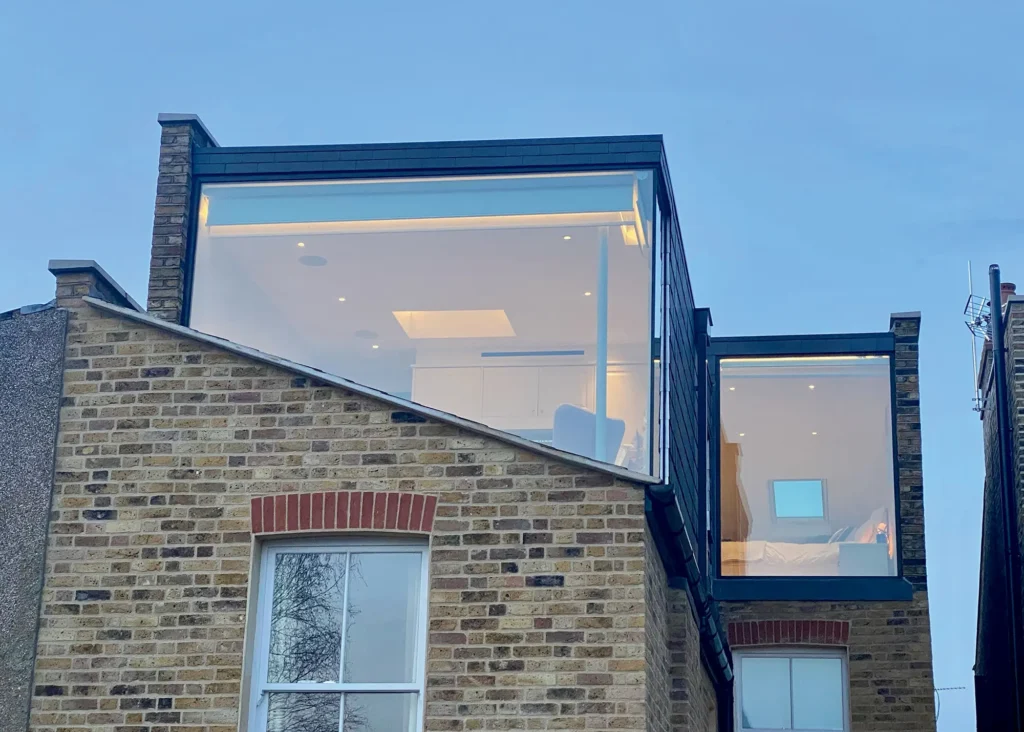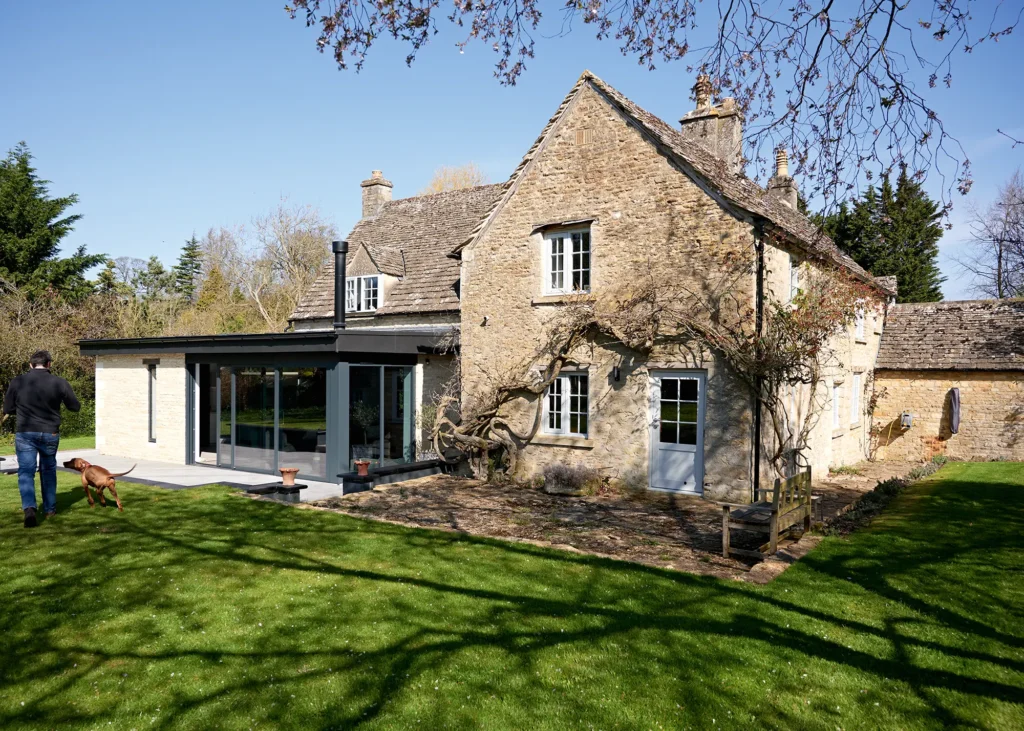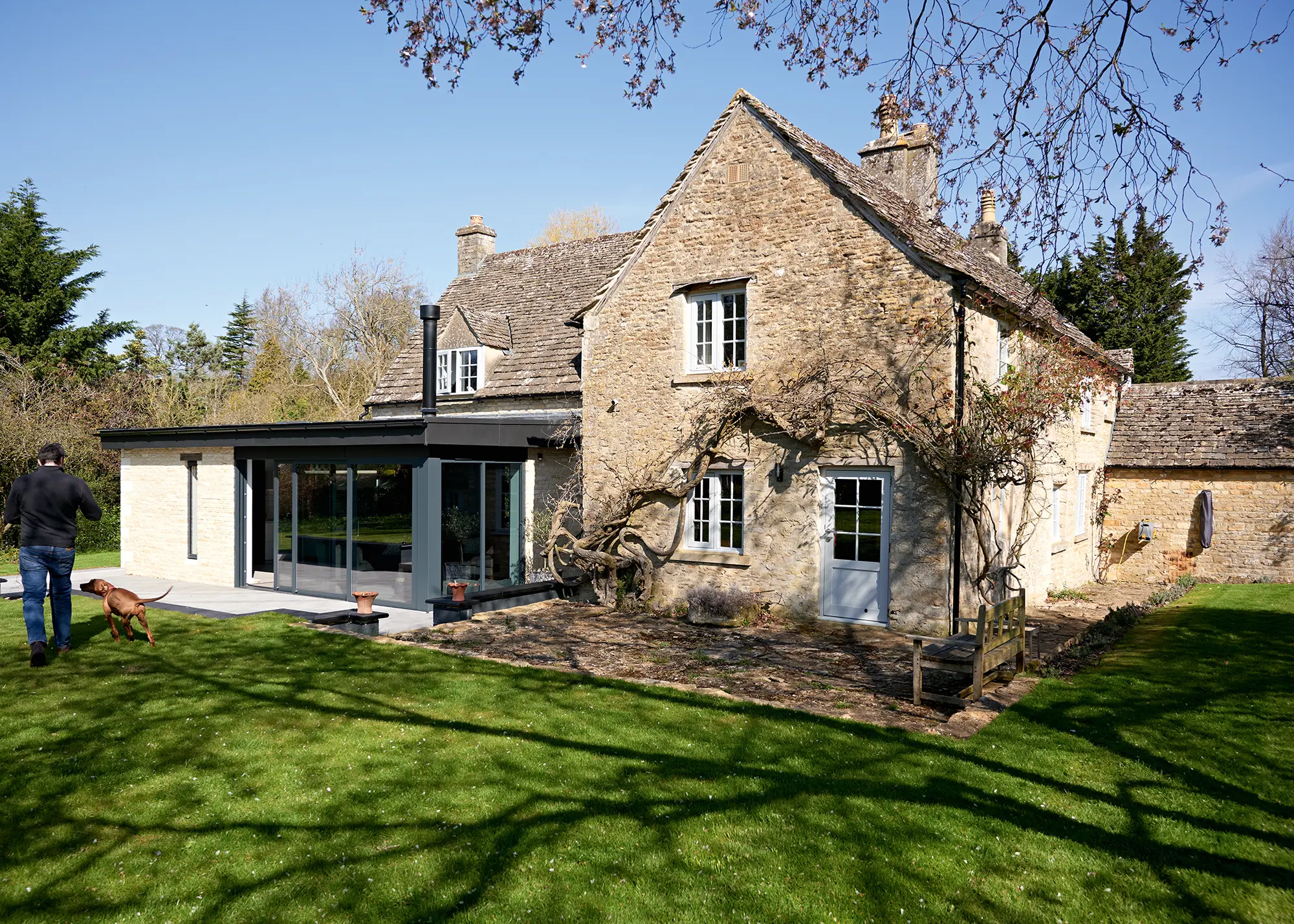Renovating a Home: Will I Need Planning Permission to Make House Alterations?
A wide range of work can be done to renovate a property without having to seek full planning consent. Typical pre-approved projects include recladding, updating windows and doors, internal changes, installing solar panels, some types of extension, and changes to hard and soft landscaping in the garden or driveway. However, there are special circumstances where any or all of these might still need full permission or other consents.
It’s key to seek early advice on the correct approach from your architect or planning consultant, and to potentially refine and confirm this through a pre-application process with the council before finalising the design and starting your project. Factoring in time now will minimise uncertainty and ensure your finished renovation can be enjoyed for years to come.
What Do Permitted Development Rights Cover for Home Renovations?
The Permitted Development (PD) regime sets out a range of projects that can be undertaken without submitting a planning application. PD can enable some quite significant changes to your property, such as extensions within certain sizes and parameters. The rules around Permitted Development can be quite complex. What is allowed will depend on the history of your property, along with the extent of any previous works and how they were achieved – ie did they need planning permission?
You may also need to look at the original consent that was granted for the house, particularly if it is a fairly new home, to see if the approval imposed any restrictions on future works that can be done without permission.
In circumstances where certain PD rights have been removed on the original permission for the house, even changes to the garden may require a formal application. Similarly, you should check if your property is within an area subject to an Article 4 Direction, as this may remove rights for certain Permitted Development works.
If an architect or architectural designer is drawing up plans for your renovation, they should be able to advise if the project falls within PD. If you aren’t sure, it’s always worth seeking advice from a local planning consultant.
Read More: Loft Conversion Ideas: 13 Amazing Projects to Inspire Your Attic Renovation
Who Should I Go to For Professional Advice When Renovating a Home?
Your local planning authority will have a procedure through which you can seek their opinion as to what works require permission and what is likely to be approved. This pre-application process has a fee attached and will take time – exactly how much and how long will vary depending on the authority. But from this, you’ll have a better understanding of whether you need planning consent for the scheme, the council’s likely view of the works proposed and any other information you would need to submit to aid the application.

Projects in sensitive locations, such as Areas of Outstanding Natural Beauty, are subject to more rigorous consents
This process can be helpful if you are undertaking a project on a listed building or property within a conservation area, where there is greater sensitivity in terms of what is allowed. In these circumstances, you may also need to acquire listed building or conservation area consent, particularly if you are looking to undertake any demolition works as part of the renovation.
Read More: How to Get Planning Permission in the Countryside
QUICK GUIDE Planning Tips for Home Renovations1 Identify any constraints which might mean that your renovation works can’t be undertaken as Permitted Development – for example, planning conditions, Article 4 Directions and heritage designations. 2 Seek advice from the experts (architects, planning consultants and heritage consultants) about what works can be undertaken as PD and what will need permission, and to refine the scheme to meet your expectations and a level of risk you’re comfortable with. 3 Think about the next step. Is a pre-application needed with the council? What other information will be needed to accompany the full planning application? 4 Factor in time for the process – even if you don’t need formal planning. Learn More: 10 Renovation Mistakes to Avoid |
In more sensitive locations and circumstances, it’s always beneficial to seek professional advice, which may entail the input of a heritage consultant. This will assist in understanding what might be possible and whether any part of your proposal would be too controversial in planning or heritage terms.
For example, if a particular feature is specifically identified in a listing description of the property, it is unlikely this could be removed, but it might be possible for it to be sensitively renovated.

This glass box project by A2 Studio was undertaken under Permitted Development
Do I Need a Certificate of Lawfulness When Renovating a Home?
Even if your proposed renovation project can be undertaken without full planning permission, you might want to seek a Certificate of Lawfulness to confirm that the work is lawful and does not need consent.
The best strategy is to acquire this in advance. Seeking confirmation retrospectively, after you’ve spent time and money on the works, is a risky approach – especially if you’re in any doubt about whether you might need planning consent.

This loft conversion by Plus Rooms went through on a combination of planning permission and Permitted Development
Obtaining a Certificate of Lawfulness is much less onerous than a planning application and the package of information needed to secure it is more streamlined. It’s worth undertaking for peace of mind, but remember to factor it into your timescales – it will usually take eight weeks for a decision to be issued by the council.

The extension to this grade II listed home in a conservation area, by Rixon Architects, was designed to be respectful to the building’s character and location
In some cases, you may be undertaking a range of works as part of your renovation, some of which fall under PD and some of which do not. In this case, seek professional advice on how to break things down. They may suggest doing some through one route (such as a Certificate of Lawfulness) and some through full consent; or it might be better to include them all in a planning application for completeness.
This will depend on several factors, such as the risks associated with achieving permission for some elements and the timescales and process for the works. Again, this is something that can be tested through the pre-application route.
Looking for more expert planning advice? Read more from Build It’s planning expert Julia Riddle


































































































 Login/register to save Article for later
Login/register to save Article for later












